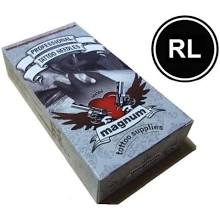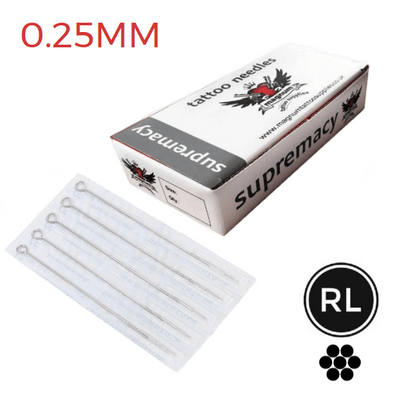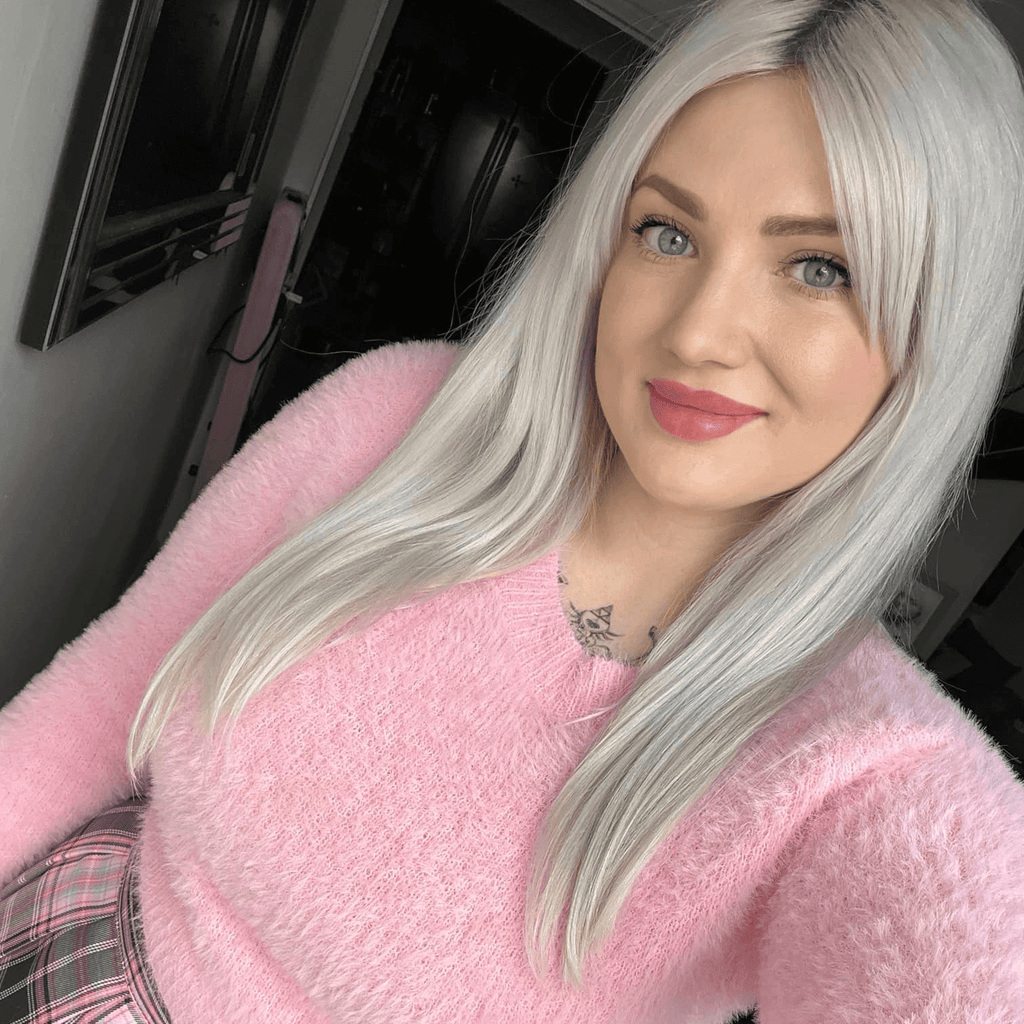Embroidery tattoos are an exquisite form of body art that blends the timeless beauty of traditional embroidery with modern tattooing techniques. This style captures the look of embroidered fabric, with artists using meticulous methods to achieve textured, three-dimensional effects on the skin.
What are embroidery tattoos?

Embroidery tattoos are a distinctive style of body art designed to mimic the look of embroidered fabric. This technique uses bold outlines and colour shading to create a textured appearance that resembles the threadwork of traditional embroidery.
Popular for its vivid and tactile effect, this type of tattoo often features floral designs, patches, or other motifs that appear as if sewn directly onto the skin, providing a unique, three-dimensional visual impact.
How to do 3D effect embroidery tattoo design?

Creating a 3D effect in an embroidery tattoo design involves a meticulous process that enhances the tattoo's texture and depth, giving it a lifelike, three-dimensional appearance. You can follow this detailed step-by-step guide:
Step 1: Design and sketching
The process begins with a meticulous design and sketching phase, where the tattoo artist conceptualises the embroidery tattoo. This involves drawing a detailed plan that highlights areas for dimensional effects, including the placement of shadows and highlights.
The tattoo design must be carefully crafted to ensure it mimics the look of actual embroidery, with stitch patterns and texture that will later translate into a 3D effect on the skin.
Step 2: Choice of needles and ink
Using the correct needles and tattoo ink is crucial for achieving a realistic embroidery effect. Artists typically use smaller needles, such as a 3RL, which allow for precision in creating fine, thread-like lines.
The choice of ink colours is also essential; vibrant and contrasting shades help to enhance the depth and texture of the design, mimicking the varied hues of real threads.
Step 3: Layering technique
Layering is a key technique in creating the 3D effect of an embroidery tattoo. The artist begins with a base layer of light colours and gradually adds darker shades to build depth.
This technique involves careful placement of colours to ensure that each 'stitch' appears distinct and raised, similar to the way light and shadow play on actual embroidered fabric.
Step 4: Texture and detailing
Adding texture is what truly brings an embroidery tattoo to life. This is achieved through techniques such as stippling and varying the stitch patterns within the tattoo design.
Each stitch is crafted to look as though it were sewn into the skin, with particular attention paid to how real threads would look and feel. Detailing involves fine touches that enhance the tactile appearance, making the tattoo look touchable and layered.
Step 5: Highlighting and shadowing
The strategic use of highlights and shadows is critical for the 3D effect. Highlights are placed where light would naturally reflect off the threads, while shadows are added beneath the stitches to create an illusion of depth. This contrast is what makes the embroidery appear to stand out from the skin, giving it a three-dimensional quality.
Step 6: Finishing touches
In the final stage, the artist revisits the entire tattoo to add any necessary finishing touches. This might involve sharpening up the details, enhancing the colours, or adding additional highlights and shadows to perfect the 3D effect. It's these final adjustments that ensure the tattoo fully captures the essence of embroidered art.
Common embroidery tattoo design

Embroidery tattoos can feature a wide range of designs, often drawn from traditional embroidery patterns or popular motifs. These are some common themes and motifs found in embroidery tattoo designs:
- Floral patterns: Roses, peonies, and other flowers are popular choices, mimicking classic embroidery styles.
- Animals: Birds like swallows or mythical creatures like dragons, styled as if stitched with thread.
- Insects: Butterflies, bees, and other insects are often depicted with intricate, thread-like detailing.
- Text and quotes: Styled to appear as though they are sewn into the skin with a typographic or script font.
- Cultural and traditional designs: Designs that reflect specific cultural heritage, such as mandalas, tribal patterns, or folk art.
- Nautical themes: Anchors, ships, and compasses that look like they’ve been embroidered onto the skin.
- Celestial bodies: Moons, stars, and planets with a tactile, fabric-like texture.
- Hearts and love symbols: Stitched heart designs or symbols that represent affection and connection.
- Banners and ribbons: Often accompanying other elements or containing names, dates, or meaningful words.
- Patch-like designs: Mimicking the look of actual sewn-on patches, often with borders and frayed edges.
Do embroidery tattoos hurt?
Embroidery tattoos can be particularly painful due to the technique used, which often involves dense packing of ink to achieve the vibrant, textured look of threaded embroidery.
This process might require multiple passes over the same area to build up the colour and texture, potentially increasing the sensation of discomfort. Areas with thinner skin or closer to bones may feel more painful when receiving an embroidery tattoo.
How long does the embroidery tattoo process last?
The duration of an embroidery tattoo session depends on the tattoo size and complexity of the design. A small, simple embroidery tattoo might take a few hours, while a larger, more detailed piece could require multiple sessions spread over several hours each.
The intricate nature of these tattoos, which replicates the look of actual embroidery, demands precise and meticulous work from the tattoo artist, often extending the time needed to complete the tattoo compared to more traditional styles.
How long do embroidered patches last?
Like all tattoos, they have the potential to last a lifetime. However, the specific longevity of the vividness and sharpness of the details can vary. Typically, the initial vibrancy of an embroidered tattoo might begin to fade within 5 to 10 years, depending on skin type, sun exposure and the quality of the tattoo ink used.
To maintain the best appearance, touch-ups could be necessary every 5 to 10 years. This can help refresh the colour intensity and define details that may have blurred over time. Continuous care, including using sunscreen and moisturising the tattooed area, is essential to extend the durability and appearance of embroidered tattoos.
How to take care of embroidered patch tattoos
Taking care of an embroidery tattoo is crucial for preserving its vibrant, textured appearance. Here are some essential aftercare tips:
- Gently wash the embroidery tattoo with lukewarm water and fragrance-free soap twice a day to prevent infection.
- After washing, pat the tattoo dry with a clean, soft towel. Avoid rubbing the area.
- Use a thin layer of fragrance-free, hypoallergenic ointment for the first few days, then switch to a fragrance-free lotion to keep the area moisturised.
- Keep the embroidery tattoo out of direct sunlight. Once healed, use sunscreen on the tattoo to prevent fading from UV rays.
- Avoid wearing tight clothing over the tattoo area to prevent irritation and allow the skin to breathe.
- Stay out of pools, hot tubs, and long baths while the tattoo is healing, which is typically about two weeks.
- As the tattoo heals, it will scab. Do not pick at the scabs or scratch the area.
- Watch for excessive redness, swelling, or a pus-like discharge. If you see any signs of infection, consult a healthcare professional immediately.
Final thoughts
Embroidery tattoos represent a unique intersection of traditional tattoo art and the intricate craftsmanship of embroidery. This style demands a high level of skill and creativity and a deep understanding of how textures and dimensions can be portrayed on human skin. For tattoo artists looking to explore and master this fascinating style, ensuring you have the best tools at your disposal is crucial.
For artists keen on bringing these vibrant designs to life, our website offers high-quality tattoo equipment for creating intricate embroidery tattoos. Visit our website to see our collection and equip yourself with the best tools to enhance your tattoo artistry.
























































 Studio supplies
Studio supplies












 Power & batteries
Power & batteries








 Aftercare
Aftercare





















 Apprentice
Apprentice


 Piercing & jewellery
Piercing & jewellery







 PMU supplies
PMU supplies




 New arrivals
New arrivals
 Gift vouchers
Gift vouchers
 Shop all
Shop all










































